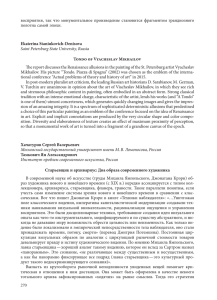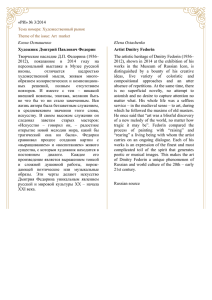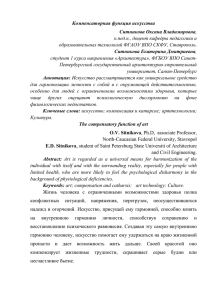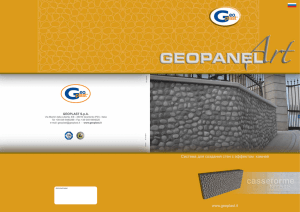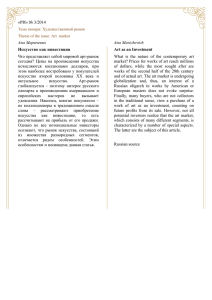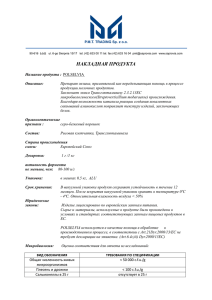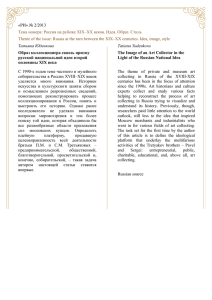only on the art of these epochs, but also on the Romanticism of the
реклама
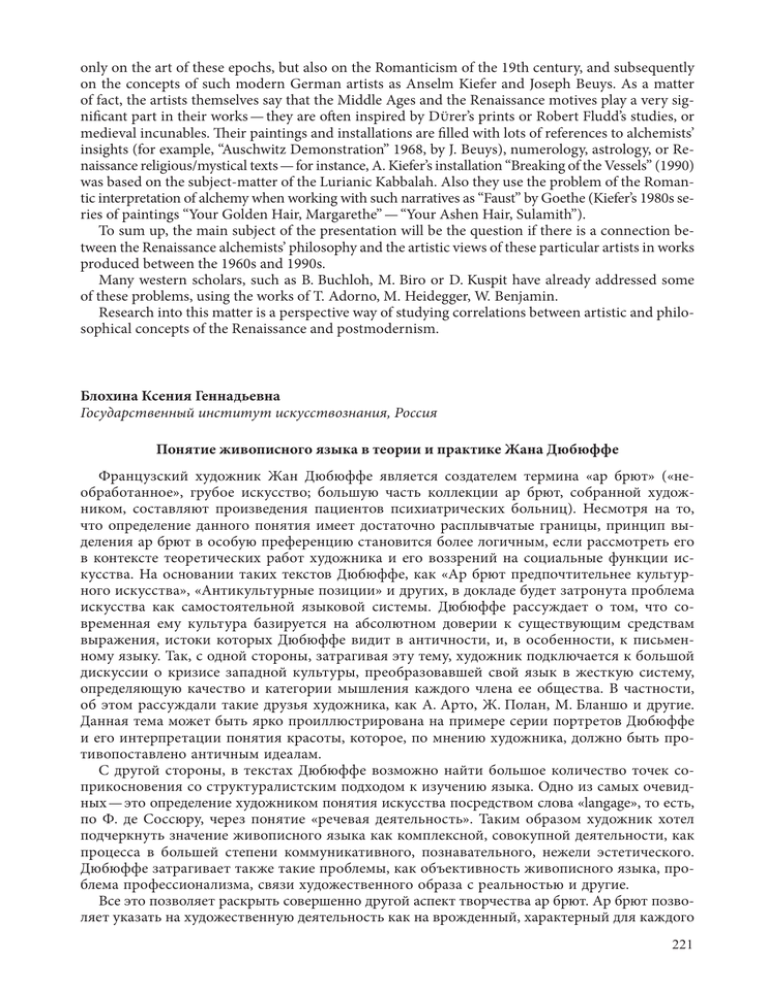
only on the art of these epochs, but also on the Romanticism of the 19th century, and subsequently on the concepts of such modern German artists as Anselm Kiefer and Joseph Beuys. As a matter of fact, the artists themselves say that the Middle Ages and the Renaissance motives play a very significant part in their works — they are often inspired by DÜrer’s prints or Robert Fludd’s studies, or medieval incunables. Their paintings and installations are filled with lots of references to alchemists’ insights (for example, “Auschwitz Demonstration” 1968, by J. Beuys), numerology, astrology, or Renaissance religious/mystical texts — for instance, A. Kiefer’s installation “Breaking of the Vessels” (1990) was based on the subject-matter of the Lurianic Kabbalah. Also they use the problem of the Romantic interpretation of alchemy when working with such narratives as “Faust” by Goethe (Kiefer’s 1980s series of paintings “Your Golden Hair, Margarethe” — “Your Ashen Hair, Sulamith”). To sum up, the main subject of the presentation will be the question if there is a connection between the Renaissance alchemists’ philosophy and the artistic views of these particular artists in works produced between the 1960s and 1990s. Many western scholars, such as B. Buchloh, M. Biro or D. Kuspit have already addressed some of these problems, using the works of T. Adorno, M. Heidegger, W. Benjamin. Research into this matter is a perspective way of studying correlations between artistic and philo­ sophical concepts of the Renaissance and postmodernism. Блохина Ксения Геннадьевна Государственный институт искусствознания, Россия Понятие живописного языка в теории и практике Жана Дюбюффе Французский художник Жан Дюбюффе является создателем термина «ар брют» («необработанное», грубое искусство; большую часть коллекции ар брют, собранной художником, составляют произведения пациентов психиатрических больниц). Несмотря на то, что определение данного понятия имеет достаточно расплывчатые границы, принцип выделения ар брют в особую преференцию становится более логичным, если рассмотреть его в контексте теоретических работ художника и его воззрений на социальные функции искусства. На основании таких текстов Дюбюффе, как «Ар брют предпочтительнее культурного искусства», «Антикультурные позиции» и других, в докладе будет затронута проблема искусства как самостоятельной языковой системы. Дюбюффе рассуждает о том, что современная ему культура базируется на абсолютном доверии к существующим средствам выражения, истоки которых Дюбюффе видит в античности, и, в особенности, к письменному языку. Так, с одной стороны, затрагивая эту тему, художник подключается к большой дискуссии о кризисе западной культуры, преобразовавшей свой язык в жесткую систему, определяющую качество и категории мышления каждого члена ее общества. В частности, об этом рассуждали такие друзья художника, как А. Арто, Ж. Полан, М. Бланшо и другие. Данная тема может быть ярко проиллюстрирована на примере серии портретов Дюбюффе и его интерпретации понятия красоты, которое, по мнению художника, должно быть противопоставлено античным идеалам. С другой стороны, в текстах Дюбюффе возможно найти большое количество точек соприкосновения со структуралистским подходом к изучению языка. Одно из самых очевидных — это определение художником понятия искусства посредством слова «langage», то есть, по Ф. де Соссюру, через понятие «речевая деятельность». Таким образом художник хотел подчеркнуть значение живописного языка как комплексной, совокупной деятельности, как процесса в большей степени коммуникативного, познавательного, нежели эстетического. Дюбюффе затрагивает также такие проблемы, как объективность живописного языка, проблема профессионализма, связи художественного образа с реальностью и другие. Все это позволяет раскрыть совершенно другой аспект творчества ар брют. Ар брют позволяет указать на художественную деятельность как на врожденный, характерный для каждого 221 человека, свободный язык, совершенно далекий от принятой классической эстетики. Ведь лишь благодаря развитию и авторитарности западной культуры и всех ее механизмов производства он превратился в язык только «одаренных» людей. Ksenia Blokhina State Institute of Art Studies, Russia The Concept of Pictorial Language in Jean Dubuffet’s Theory and Practice French artist Jean Dubuffet is the creator of a term “art brut” (most of the art brut collection made by the artist, are works of psychiatric patients). Despite the fact that the definition of this concept has rather vague borders, the principle of allocation of art brut in special preferences becomes more logical if we consider it in the context of the theoretical work of the artist and his views on a social function of art. On the basis of such texts of Dubuffet as “Art Brut is preferable to cultural arts”, “Anticulturals positions” and others the report addresses the problem of art as an independent linguistic system. Dubuffet argues that contemporary culture is based on absolute trust to the existing means of expression, the origins of which he sees in antiquity, and to the written language in particular. So, on the one hand, affecting this subject, the artist joins the great debate on the crisis of Western culture, which transformed its language in a rigid system that determines the quality and categories of thought of each member of its society. The problem was discussed by the artist’s friends such as A. Artaud, J. Paulhan, M. Blanchot and others. This theme can be clearly illustrated by the series of portraits of Dubuffet and his interpretation of the concept of beauty, which, according to the artist, is to be contrasted with the ancient ideals. On the other hand, in Dubuffet’s texts it is possible to discover lots of common traits with the structuralist approach to language learning. One of the most obvious ones is the artist’s definition of the concept of art through the word “langage”, that is according to F. de Saussure, through the concept of “speech activity”. Thus, the artist wanted to emphasize the importance of pictorial language as an integrated, comprehensive activity, as a communicative, cognitive process, rather than aesthetic one. Dubuffet also addresses such issues as objectivity of pictorial language, the problem of professionalism, communication of artistic image with reality, and others. All this allows us to reveal a completely different aspect of art brut. Art brut allows one to describe the artistic activity as an innate characteristic of every person, free language, which is far from the accepted classical aesthetics. After all, it was only through the development and authoritarianism of Western culture and of its mechanisms of production that art started to be defined as a language only of the “talanted” people. Milan Prosen National Theatre of Belgrade, Serbia The participation of Russian architects and sculptors in making Art Deco Architecture in Serbia The aim of this paper is to present the participation of Russian architects and sculptors in the emerging and development of the Art Deco style in Serbian architecture, to point out eminent masters and significant monuments, as well as their territorial and quantitative representation. The study is based on analyses of the realized projects, relevant and accessible documents found in archives, museums, publications, photo documentation and private collections. Art Deco architecture was one of the dominant stylistic phenomena in Serbia between the two world wars. The decorative premises made this essentially modern style suit the refined artistic taste of Serbian social elite, that engaged this style in creation of an image of its representative identity. 222
